The Six Thinking Hats method may well be the most important change in human thinking for the past twenty-three hundred years.
That’s a bold statement. However, De Bono backs it up with success story after success story - from Cambodian villagers to multinational corporations; from preschoolers to researchers. This method is so powerful, de Bono explains, because “Thinking is the ultimate human resource.” - pg. xi
Improving our thinking improves every aspect of our lives.
Here's the problem - most of our thinking and communication is done on autopilot. Think of the typical meeting. One person proposes an agenda and a starting topic. Another brings up a creative concept, and someone else shoots it down. This person is always cautious, that person is always optimistic. Ideas are discussed haphazardly as they are introduced. People become confused. De Bono continues:
The main difficulty of thinking is confusion. We try to do too much at once. Emotions, information, logic, hope and creativity all crowd in on us. It is like juggling with too many balls.
What I am putting forward in this book is a very simple concept which allows a thinker to do one thing at a time. [...] The concept is that of the six thinking hats.
Thanks to a handful of ancient Greeks, the majority of Western thinking is based on argument. The methods of thought developed by Socrates, Plato, and Aristotle were significant intellectual developments in their time, allowing us to determine ‘what is’ through formal structures of analysis, judgement, and argument.
However, de Bono argues that these methods are not sufficient if we wish to promote creativity and constructive thinking. He explains, “Instead of judging our way forward, we need to design our way forward. We need to be thinking about ‘what can be,’ not just about ‘what is.’” - pg. 3
In argument thinking, each person holds a different point of view and defends/promotes that position. In parallel thinking, everyone looks at the problem from each point of view in turn until all perspectives have been covered.
What are these perspectives? The Six Thinking Hats.
The hats are symbols for different directions of thinking. The system gamifies the process of looking at topics from different directions. Each person’s creativity can be used to attack a problem from all angles, rather than defending one position. Competitive people can show off through their adaptability, rather than by beating down other ideas. Meetings take less time and produce more results. Everyone wins.
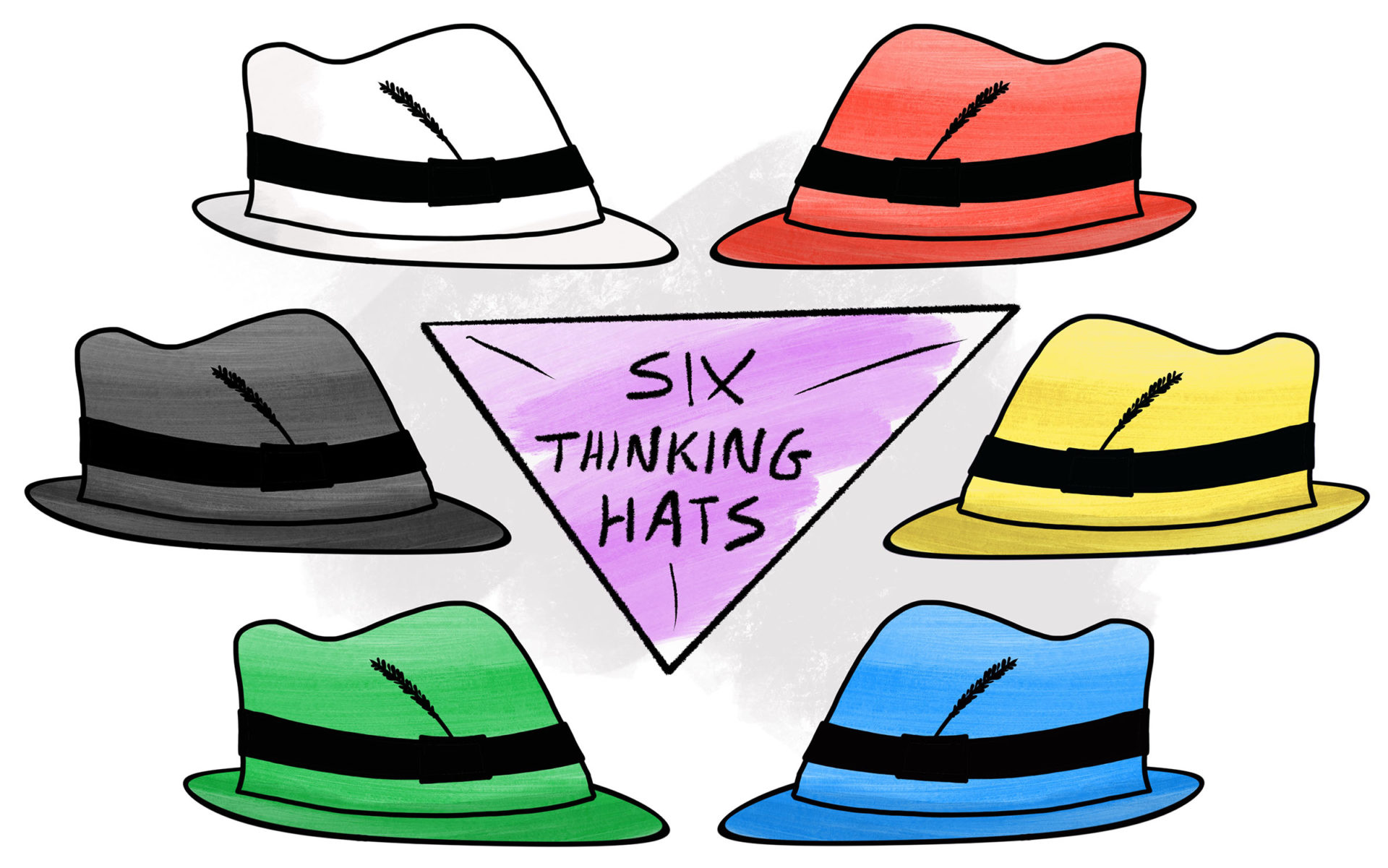
Each hat has a color - white, red, black, yellow, green, and blue - and each color represents a direction of thinking.
White hat - Information, facts and figures
Red hat - Emotions and reactions
Black hat - Cautious and careful
Yellow hat - Optimism and positive thinking
Green hat - Creativity and new ideas
Blue hat - Organization and oversight
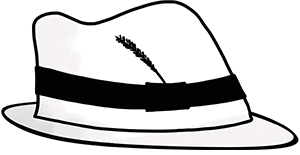
The white hat is for information, facts and figures. It provides neutral reports without argument or opinion. It differentiates between proven facts and anecdotal facts. It asks questions and determines what information is missing or needed.
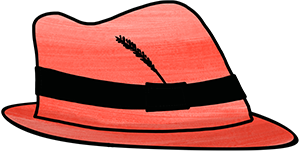
The red hat is for emotions, reactions, and intuitions. It allows people to state their feelings without needing to justify them. Red hats are useful for assessing the feelings and emotions of the group independent of the facts.
Note: red hat thinking is the opposite of white hat thinking.
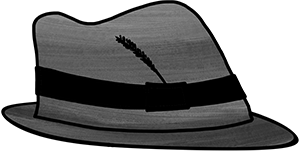
The black hat is cautious and careful. It helps us avoid mistakes. It points out potential weaknesses and downsides. What could go wrong? The black hat is not a justification for argument - it is merely for putting these potential downsides on the table for consideration. Note: due to negativity bias, it is easy to overdo black hat thinking. Be careful.
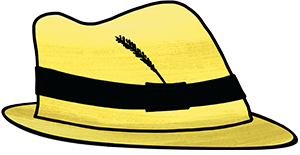
The yellow hat is deliberately optimistic. It identifies benefits and possibilities, and highlights what is valuable. Yellow hat thinking is constructive rather than emotional.
Note: yellow hat thinking is the opposite of black hat thinking.
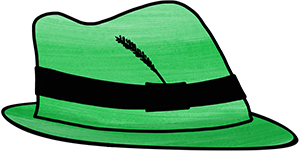
The green hat is for creativity and new ideas. It allows everyone to make a creative effort and propose novel solutions. It discovers new courses of action. Ideas are documented but not judged. Creative techniques such as provocation and lateral thinking may be used.
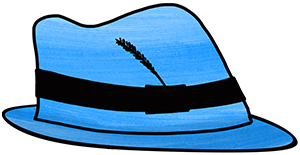
The blue hat is for organization. It introduces agendas, keeps discipline, and announces the sequence of hats to be used. It defines problems and objectives. At the end of a session, a blue hat is used to summarize outcomes and establish next steps.
The hats may be used individually to request a certain kind of thinking, or they may be used in a predefined sequence to explore a subject or solve a problem.
The names of the hats are a useful proxy for their function. It is less offensive to ask someone to ‘take off their red hat’ than to ‘stop being emotional.’ You can also say, “Let’s have some green hat here” if you would like to generate creative ideas.
The hats may be used in any order, but a session should always start and end with a blue hat. The first blue hat is used to define what the session is for, establish any needed background, and determine what sequence of hats to use to accomplish the desired objective. The last blue hat is used to summarize what has been accomplished and what should be done moving forward.
You can use sequences of hats strategically. For example, if a meeting is an emotional one, a red hat may be called after the first blue hat to allow people to get these emotions out. If the topic is not emotional, a white hat may be a better place to start to allow all the facts to be presented first. You might use a yellow > black > green sequence for creative problem-solving; listing the benefits first can help motivate the problem-solving later.
It is worth noting that the thinking hats method is also useful outside of meetings. You can use it by yourself to help clarify your thoughts around an important decision. Recognizing which hat you are currently currently using can remind you to consider the other perspectives as well.
Of course, this is just skimming the surface - in the book, De Bono goes into great detail on the effective use of each hat, and provides strategies on how to sequence the hats for different objectives. Many of his examples are quite entertaining. The book is short, well-written, and full of ideas. Meetings will never be the same again!